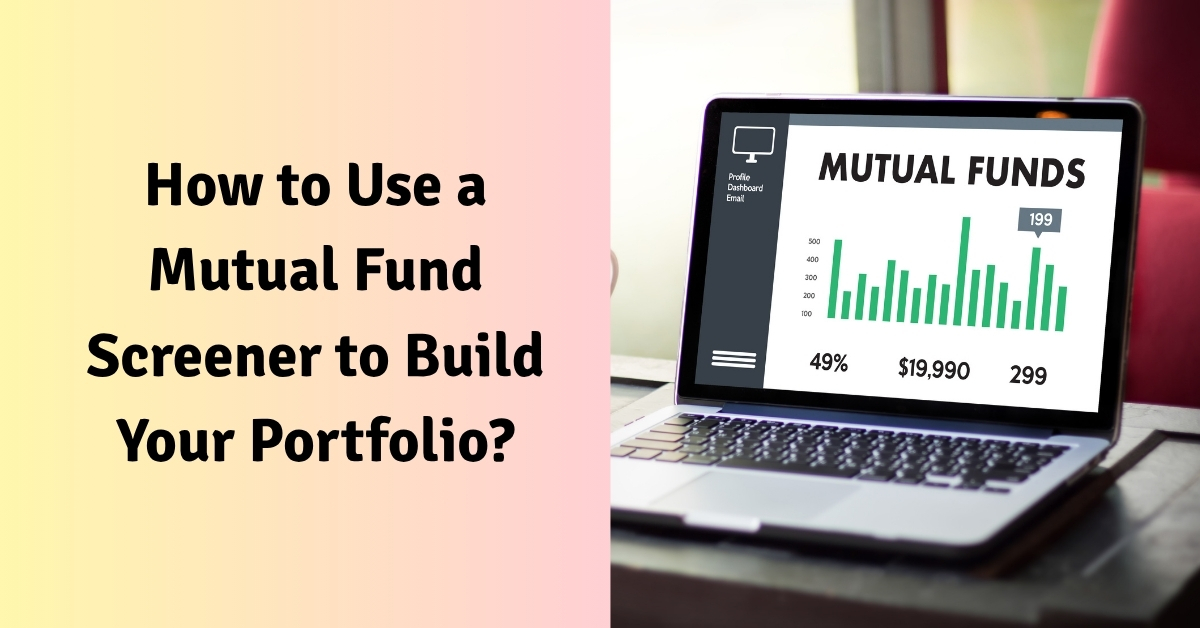How to Use a Mutual Fund Screener to Build Your Portfolio?

Scrolling through hundreds of mutual funds can feel like standing in front of a buffet with no labels. Large-cap, flexi-cap, hybrid, balanced advantage, everything looks tempting, and it’s easy to pick the wrong plate.
That’s where a mutual fund screener helps. It’s not just a data tool, it’s a way to make investing simpler, smarter, and more aligned with your goals. When used correctly, a screener can help you filter out noise, stay objective, and focus on what truly fits your portfolio.
Step 1: Be clear on what you want
Before you dive into numbers, pause and ask:
- What’s my goal? Am I building wealth, generating income, or preserving capital?
- How long can I stay invested? Short-term, medium-term, or long-term?
- How much risk am I willing to take?
Without clarity, even the most powerful screener will just give you a long list but not the insight you need.
Step 2: Focus on the right metrics
A screener throws dozens of numbers at you, but don’t get lost in the noise. Concentrate on the ones that reveal performance, risk, and efficiency:
For equity funds:
- 3-year & 5-year CAGR: Shows performance across market cycles, not just a lucky year.
- Alpha & Sharpe ratio: Measures how well the fund rewards you for the risk you take.
- Standard deviation/Beta: Shows how volatile the fund is compared to its benchmark.
- Expense ratio: Lower cost means more of your money stays invested.
- Fund manager tenure: A stable manager often means a consistent strategy.
For debt funds:
- Average maturity & duration: Shows sensitivity to interest rate changes.
- Credit quality: High-rated papers = safer portfolios.
- Yield to maturity: Expected returns before costs.
Focus on a handful of meaningful metrics, rather than drowning in numbers you may never use.
Step 3: Guide to pick the fund category
Once you know your goals and metrics, the next step is to match fund types to your investment horizon and risk appetite. Here’s a simple thumb rule:
- Less than 1 year: Stick to Debt or Liquid Funds, stability and liquidity are key.
- 2–3 years: Conservative Hybrid Funds offer a balance of safety and modest growth.
- 3–6 years: Aggressive Hybrid Funds, higher equity exposure for growth potential.
- More than 6 years: Equity Funds, ideal for long-term wealth creation.
This is not just theory , it helps you avoid mismatches like putting short-term money into volatile equity or locking long-term goals into low-return debt.
Step 4: Filtering with purpose
Now that you know your category, narrow your choices:
- Pick your fund category equity, hybrid, or debt (based on the horizon above).
- Check consistent performance – funds beating benchmarks over 3–5 years.
- Filter by risk exclude overly volatile options.
- Cut out high-cost funds expense ratios that eat into returns are a silent drain.
- Ensure stability fund managers with at least 2–3 years on the job.
After this, your list may shrink from hundreds to around 8–10 funds, a manageable number for deeper analysis.
Step 5: Compare your shortlisted funds
Side-by-side comparisons reveal more than a single number can:
- Performance vs peers and benchmarks
- Volatility and downside protection
- Expense ratio and exit load
- Fund manager’s tenure
- Portfolio overlaps , avoid multiple funds with the same top holdings
Think of it like tasting your shortlisted buffet items: you’re looking for consistent flavor, not just the one that looks appealing on Instagram.
Step 6: Review and adapt regularly
Markets change, fund strategies evolve, and your goals may shift. Regular reviews ensure your portfolio stays on track:
- Quarterly: Run your screener again, check if your funds still meet your criteria.
- Half-yearly: Look at performance vs benchmarks; note any manager changes.
- Annually: Rebalance allocations; optimize taxes, e.g., via tax-loss harvesting.
Even 15–20 minutes of structured review each quarter is better than constantly reacting to headlines or sudden market swings.
Step 7: Avoid common traps
Even the best tools can’t save you from basic mistakes:
- Chasing last year’s top performers
- Owning multiple funds with similar holdings
- Ignoring expense ratios and tax implications
- Reacting emotionally to short-term market dips
A screener keeps you data-driven, your discipline keeps you on track.
Step 8: Think bigger than the screener
Remember, a mutual fund screener is a tool, not a solution. The real magic happens when it’s part of a holistic, long-term plan that aligns your investments, cash flows, and tax strategy with your life goals.
FAQs
1. What’s the best mutual fund screener?
Platforms like PrimeInvestor, Value Research, Morningstar, and MoneyControl provide reliable, updated data. Choose one with filters that match your strategy.
2. How often should I change funds based on a screener?
Quarterly reviews are good, but changes should only happen if a fund consistently underperforms or changes strategy/manager.
3. Should I focus more on returns or risk metrics?
Both. A fund with steady, risk-adjusted returns usually outperforms a volatile “top performer” over time.
4. How many funds should I hold?
3–6 funds are usually enough for proper diversification without overlap.
5. Can a screener replace a financial advisor?
No. A screener helps you select funds, but a financial advisor helps you design the strategy, align it with goals, and review it over time.
Final Thought
A mutual fund screener is more than just a tool. It helps you make informed, disciplined, and goal-oriented investment decisions. When combined with smart asset allocation, horizon-based fund selection, and regular reviews, it can guide you toward a portfolio that balances risk, growth, and long-term objectives.
Investing is a long-term game, and the right process today can save years of worry tomorrow.



